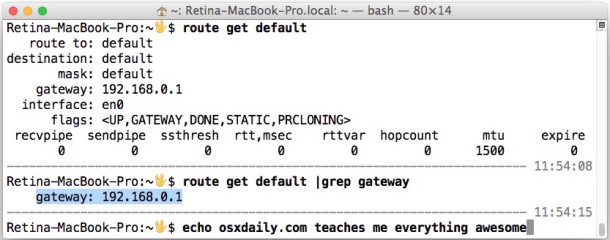Sudo ipconfig set DHCP. Usually interface is en0 or en1. To see all the gory details, run sudo ipconfig setverbose 1 before you run the above, then tail /var/log/system.log. After you're done, remember to run sudo ipconfig setverbose 0 to turn it off again.
How to find internal and external IP addresses on Mac OS X and macOS?

- Sudo /sbin/dhclient -r is equivalent to ipconfig release sudo /sbin/dhclient is equivalent to ipconfig renew sudo /sbin/ifconfig is equivalent to ipconfig The dhclient command broadcasts a DHCP message to your DHCP server, resulting in a new lease. A slower way to achieve the same result is to shutdown the interface and bring it back up via.
- Windows uses file extensions to decide what to do with a file. Those ending with '.exe' are 'executable', meaning that the Windows Explorer and various services will attempt to load them and run them as programs.
- After writing up the presentation for MacSysAdmin in Sweden, I decided to go ahead and throw these into a quick cheat sheet for anyone who’d like to have them all in one place. Good luck out there, and stay salty. Get an ip address for en0: ipconfig getifaddr en0 Same thing, but setting and echoing Continue reading Mac Network Commands Cheat Sheet.
An IP (Internet Protocol) address is assigned whenever your device connects to the Internet or a local network. The most frequent form of an IP address is four sets of digits with three digits per set. If your computer is connected to both a local network and the Internet, it will have an internal IP address signed by a local network and external IP address, which is the address of your Internet connection.
If you are setting up a network or sharing files, the IP address is required. In this article, we show a number of ways to find a Mac IP address. This guide applies to any version of Mac OS.
Table of Contents:
It is recommended to run a free scan with Malwarebytes - a tool to detect malware and fix computer errors. You will need to purchase the full version to remove infections and eliminate computer errors. Free trial available.
Find your internal IP Address through System Preferences

The first method, which will work on any operating system version, is to visit Network configuration in System Preferences. Open the Mac system preferences and locate Network, click on the network you are connected to, and below the Status line you will see your IP address.

For detailed information click Advanced and select TCP/IP tab where you will find more information about your network.

Find out your internal IP address by using Terminal
This method is easier and faster for Mac users who are familiar with a command line program called Terminal. Even if you have not used Terminal before, just follow the instructions and you will find the internal IP address. First, use spotlight by pressing Command and Spacebar and type Terminal. Then, press Return. Alternatively, you can find Terminal under the Utilities folder. Open finder, choose Applications, select Utilities, and then launch Terminal.
When Terminal has launched, type the following command: ipconfig getifaddr en0 (to find your IP address if you are connected to a wireless network) or ipconfig getifaddr en1 (if you are connected to an Ethernet). If you are using Mac OS X, the command ipconfig |grep inet displays detailed information about your computer signification in the network. The IP address is usually displayed beside last inet, however, this command does not work on macOS High Sierra.
Find your external IP address
To find your external IP address, there are two easy methods that work on all versions of the Mac operating system. First, open Google and Type IP in search. This will display your external address.
Ipconfig Command For Mac
If you can browse the Internet, use the Mac command line. Launch Terminal, which is under the Utilities folder, and type: curl ifconfig.me or curl ipecho.net/plain ; echo. These commands will display your IP address in Terminal.